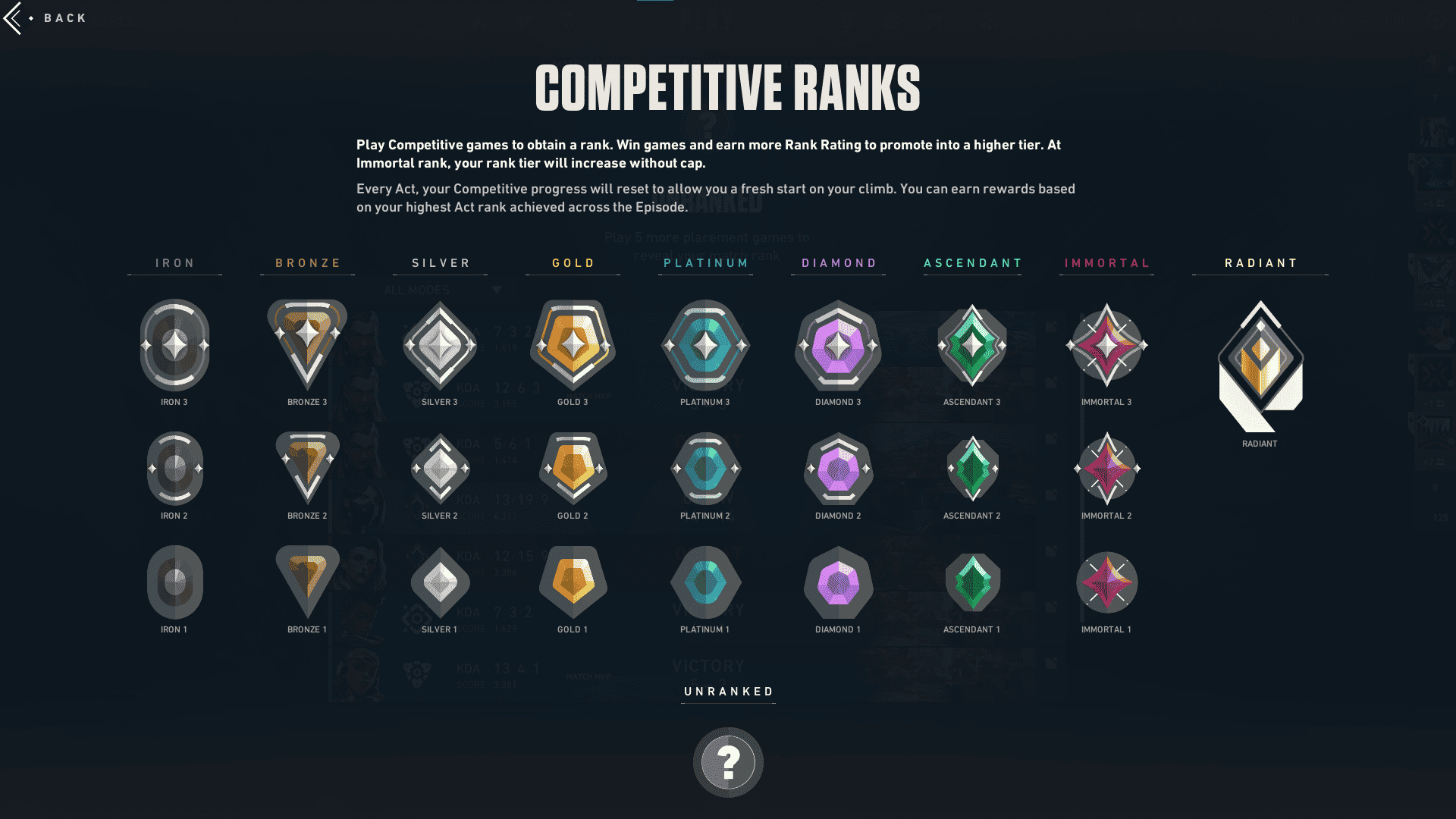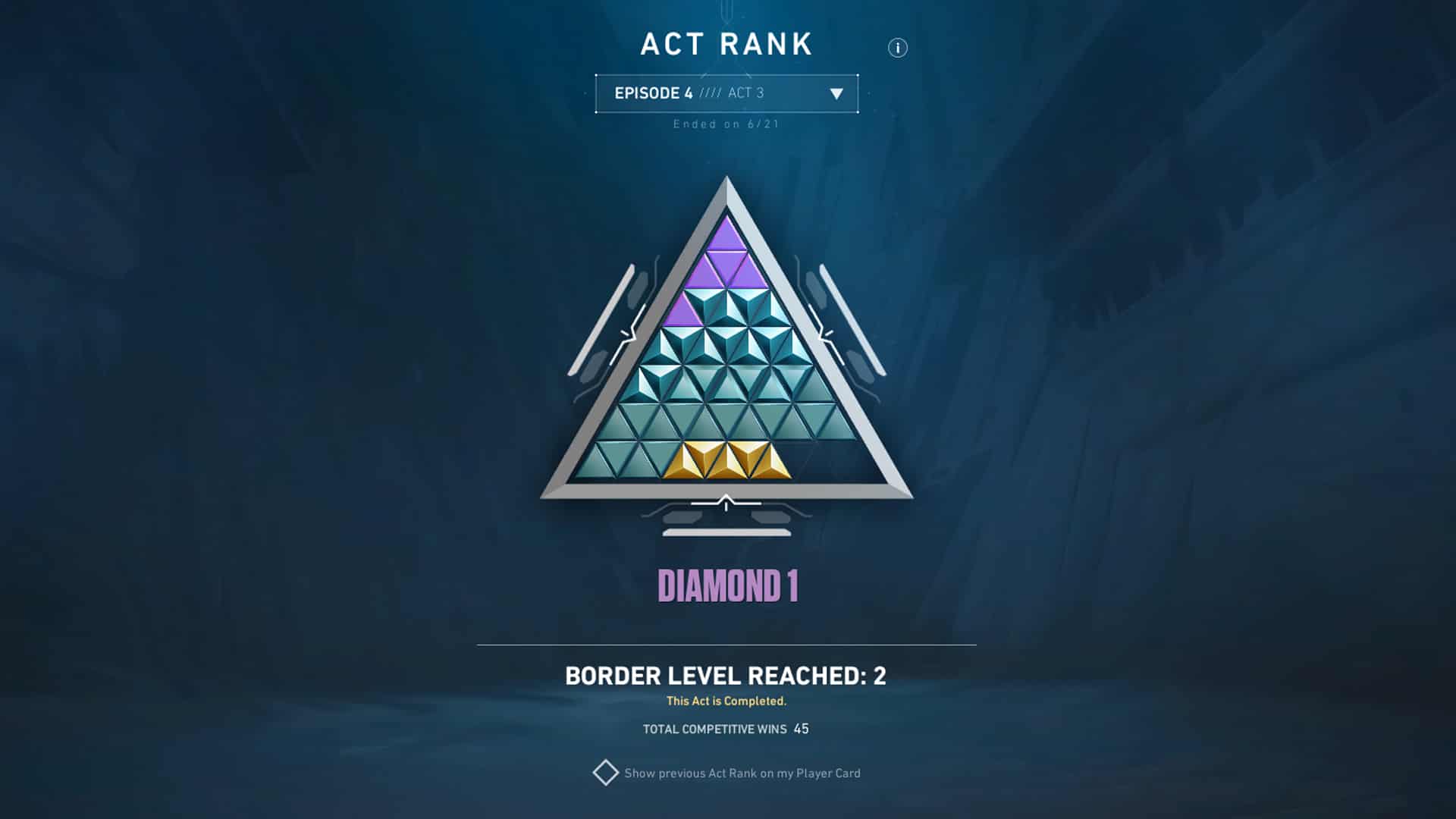You can trust VideoGamer. Our team of gaming experts spend hours testing and reviewing the latest games, to ensure you're reading the most comprehensive guide possible. Rest assured, all imagery and advice is unique and original. Check out how we test and review games here
- There is a total of 25 ranks in Valorant, ranging from Iron 3 as the lowest, all the way to Radiant as the highest rank.
- Currently, the largest population of players can be found in Gold 1 rank. Meanwhile, it’s clear that the highest rank is the most difficult to attain, with only 0.02% of players in Radiant.
Valorant features a ranking system that allows you to progressively climb the ladder. After establishing your baseline at the start of each season (called Act), you have to earn RR points to get to a higher rank. Starting from lowly Iron, there’s a long grinding journey ahead of you to get to coveted Radiant, where the best players can be found.
If you plan to set on the path to climb Valorant ranks, it’s good to get familiarized with how much there is to grind. Also, knowing the rank distribution will help you plan around points that can represent hurdles along the way. The more dense a rank, the more competition you can expect from those looking to rank up alongside you.
Valorant’s ranking system offers different metrics to gauge players’ progress and relative skill levels. Alongside an overall rank, each player also holds a separate ‘Act rank’ for every Act they engage in within an overall Episode. Additionally, Valorant uses a ‘rank rating,’ tied to your hidden MMR score.

All Valorant ranks in order
The following list represents all Valorant ranks in ascending order:
- Iron 1
- Iron 2
- Iron 3
- Bronze 1
- Bronze 2
- Bronze 3
- Silver 1
- Silver 2
- Silver 3
- Gold 1
- Gold 2
- Gold 3
- Platinum 1
- Platinum 2
- Platinum 3
- Diamond 1
- Diamond 2
- Diamond 3
- Ascendant 1
- Ascendant 2
- Ascendant 3
- Immortal 1
- Immortal 2
- Immortal 3
- Radiant
In Valorant, your rank shows where you currently stand in regard to your abilities. However, each act also earns you an individual Act rank. Riot Games refers to your highest-won rank as your ‘proven skill,’ representing your Act rank.

During an Act, you’ll see a hollow triangular badge filled with miniature coloured triangles representing your gameplay. Your highest-won rank or the top triangle represents your Act rank and the border awarded at the Act’s end.
Valorant rank distribution
Valorant doesn’t offer a direct way of tracking rank distribution. However, there are third-party solutions made by fans that can give us a rough estimate. According to Esports Tales this is the current Valorant rank distribution as of July 2024:
| Rank | Player distribution |
|---|---|
| Iron 1 | 0.7% |
| Iron 2 | 2.3% |
| Iron 3 | 6.1% |
| Bronze 1 | 6.3% |
| Bronze 2 | 9.6% |
| Bronze 3 | 8.2% |
| Silver 1 | 10.1% |
| Silver 2 | 8.3% |
| Silver 3 | 8.2% |
| Gold 1 | 7.5% |
| Gold 2 | 6.1% |
| Gold 3 | 5.0% |
| Platinum 1 | 4.4% |
| Platinum 2 | 3.7% |
| Platinum 3 | 3.4% |
| Diamond 1 | 3.1% |
| Diamond 2 | 2.5% |
| Diamond 3 | 1.8% |
| Ascendant 1 | 1.2% |
| Ascendant 2 | 0.6% |
| Ascendant 3 | 0.3% |
| Immortal 1 | 0.1% |
| Immortal 2 | 0.06% |
| Immortal 3 | 0.04% |
| Radiant | 0.009% |
Ever since Episode 4 Act 1, you must have an account level of at least 20 to queue for Competitive game mode and earn ranks in Valorant. Competitive is currently the only way to earn ranks in the game. You can queue solo or with two, three, or five-player parties. However, there’s a cap in rank difference that can queue together, disallowing players of too-high ranks to play Competitive with much lower ones.

